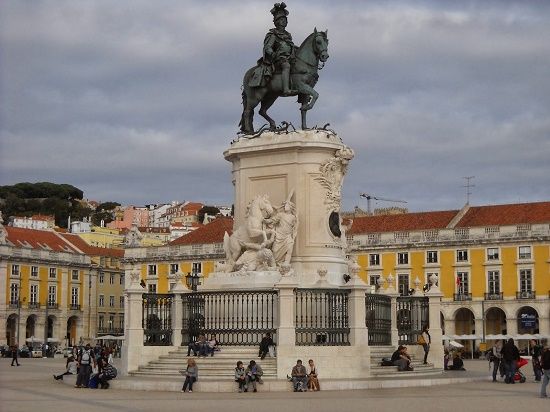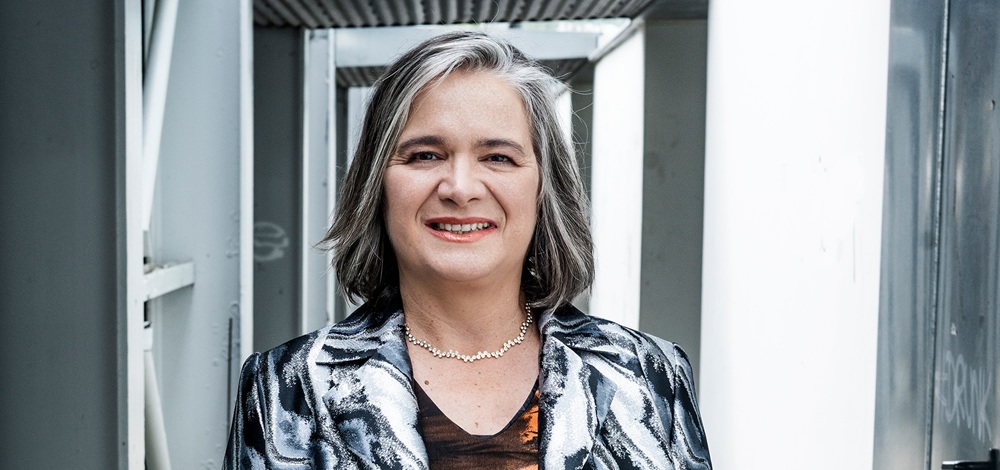Obras de referência da cultura portuguesa
ESTÁTUA EQUESTRE DE D. JOSÉ
de JOAQUIM MACHADO DE CASTRO
Praça do Comércio, Lisboa
Análise de Rui-Mário Gonçalves
Tradução: Paul Bernard

Em consequência do terramoto de 1755, a cidade de Lisboa teve de ser reconstruída rapidamente. Disso se encarregou Eugénio dos Santos, que organizou em termos muito modernos a urbanização da Baixa, dispondo as ruas retas atravessando-se ortogonalmente. Foi ele também que desenhou a Praça do Comércio, onde determinou o lugar em que seria erigido o monumento dedicado ao rei D. José. Imediatamente o alicerce do pedestal foi colocado, aguardando-se a realização da estátua equestre. O convite a Machado de Castro (1732-1822) apenas foi formulado em 1770. O escultor teve de submeter-se aos desenhos que o arquiteto Reinaldo Manuel dos Santos concebera para o pedestal e também aos desenhos que Eugénio dos Santos fizera em 1759 e foram aprovados pelo Marquês de Pombal. O escultor apenas conseguiu alterar o manto do rei, e nos grupos laterais modificou alguns panejamentos e atitudes das figuras humanas.
Outros tipos de dificuldades surgiram com a representação do corpo e do rosto do próprio rei, pois este recusou-se a posar para o artista. Machado de Castro teve de recorrer a retratos e atraiu o olhar do público para o capacete muito emplumado que acentua as sugestões de movimento contidas em toda a estátua assimétrica. O rei olha altaneiro para a sua direita; o cavalo volta também um pouco a sua cabeça na mesma direção e a sua pata dianteira direita está erguida. Numa firmeza sem rigidez, cavaleiro e cavalo avançam esmagando serpentes.
É notável o que foi conseguido fazer-se em muito pouco tempo. Trata-se da primeira estátua equestre realizada em Portugal, sendo também, neste país, um dos primeiros monumentos escultóricos feitos na rua dedicados a uma pessoa viva. Ela tornou-se, pois, a referência de uma nova atividade, até então cingida à representação de santos.
A relação espacial da estátua com o Arco da Rua Augusta intensifica a afirmação do poder régio, de modo espetacular. No seu pedestal, algumas alegorias representam a ação dos Portugueses na Europa e na Índia, ora com um cavalo pisando um guerreiro vencido, ora com um elefante derrubando escravos. O Triunfo e a Fama, em formas humanas, acompanham estes animais alegóricos. Na frente do pedestal, aparecem heraldicamente as armas do reino e um medalhão de bronze que retrata o Marquês de Pombal. Na face posterior, Machado de Castro encadeou vários tópicos: a “Cidade em ruínas” socorrida pela “Generosidade Real” com o auxílio do “Governo da República” inspirado pelo “Amor da Virtude”; o “Comércio” oferece as suas riquezas; a “Arquitetura” exibe a planta da nova cidade e a “Providência Humana” está coroada de espigas e segura com firmeza um leme e duas chaves.
EQUESTRIAN STATUE OF KING JOSÉ by JOAQUIM MACHADO DE CASTRO
Commerce Square, Lisbon
In consequence of the earthquake of 1755 the city of Lisbon had to be rapidly rebuilt. This was entrusted to Eugénio dos Santos who organised the urban plan of the Baixa (Lower Town) in very modern terms, laying out the straight streets and crossing them orthogonally. It was also he that designed Commerce Square in which he determined the spot upon which would be erected the monument dedicated to King José. Immediately the foundation of the pedestal was put in place to await the completion of the equestrian statue. The appointment of Machado de Castro (1732-1822) was only formulated in 1770. The sculptor had to submit himself to obeying the designs the architect Reinaldo Manuel dos Santos had conceived for the pedestal and also the drawings Eugénio dos Santos had made in 1759 and that were approved by the Marquis of Pombal. The sculptor was only able to alter the King’s cape, and in the side groups he modified some of the drapes and attitudes of the human figures.
Other types of difficulty emerged with the representation of the body and face of the king himself, as the latter refused to pose for the artist. Machado de Castro had to resort to portraits and attracted the public eye to the much plumed helmet that accentuates suggestions of movement contained in the entire asymmetrical statue. The king looks loftily to his right; the horse also turns his head slightly into the same direction and his front right hoof is raised. With a firmness devoid of rigidity, rider and horse advance crushing snakes in their path.
What was able to be undertaken in very little time is notable. It is no less the first equestrian statue to be sculpted in Portugal and is also in this country one of the first sculptural monuments dedicated to a living person. It therefore became the reference for a new activity until then limited to the representation of saints.
The spatial relationship of the statue with Rua Augusta, the main street, intensifies its statement of regal power in a spectacular manner. On its pedestal some allegories represent the action of the Portuguese in Europe and India, with a horse stepping on a vanquished warrior here, and an elephant overcoming slaves there. Triumph and Fame in human guise accompany these allegorical animals. On the front of the pedestal appear the kingdom’s coat of arms and a bronze medallion representing the Marquis of Pombal. On the opposite side Machado de Castro bound various topics together: the “City in ruins” rescued by “Royal Generosity” with the aid of the “Government of the Republic” inspired by the “Love of Virtue”; the “Commerce” offers its riches; “Architecture” displays a plan of the new city and “Human Providence” is crowned with ears of wheat and firmly clasps a rudder and two keys.
Obras de Referência da Cultura Portuguesa
projeto desenvolvido pelo Centro Nacional de Cultura
com o apoio do Ministério da Cultura

 Divulgue aqui os seus eventos
Divulgue aqui os seus eventos












